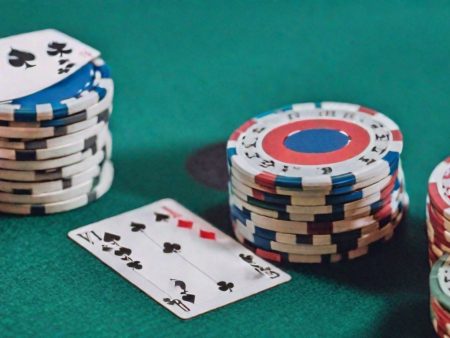In poker, the term “barrel” refers to an aggressive strategy where a player makes consecutive bets on multiple streets (typically the flop and turn) in an attempt to pressure their opponents into folding and secure the pot. The term “barrel” is a metaphor that draws from the image of firing a series of shots, symbolizing the act of making several large bets during the course of a hand.
Barreling is commonly used when a player has a weak starting hand but sees potential to win if they can convince their opponents to fold. The goal is to create pressure by making it seem as though the player holds a stronger hand than they actually do.
While the barrel can be a powerful tool for bluffing, it requires careful consideration of the game context, the players involved, and the current board. Key factors include the opponents’ playing styles, their responses to previous bets, and the possible combinations of hands they may hold. To use barreling effectively, a player must possess strong hand-reading skills and a solid understanding of probabilities. The tactic is risky but can be highly rewarding if used wisely, as improper execution can result in significant chip losses.
Key Aspects of the Barrel in Poker
Before delving deeper into this poker concept, it’s essential to heed a tip from seasoned gambling professionals: Always choose reliable, licensed online casinos to ensure a safe gambling experience. Avoid dubious platforms and stick to trusted operators. Now that we’ve established what a barrel is, let’s explore its key features.
A barrel can be employed for bluffing, where the player has a weak hand but aggressively bets to make others believe they have a strong hand. It can also function as a semi-bluff, where the player is holding a drawing hand (such as a straight or flush draw) and bets with the hope of improving their hand on the next street. To execute a successful barrel, players must carefully observe their opponents. Analyzing their playing style and hand range helps determine whether they are likely to call or fold.
Read also: Raising in Poker: Applications for Calling and Bluffing in Real Games with Examples.
Bet sizing is crucial. Generally, the bet should be at least three times the minimum bet to apply sufficient pressure on the opponents. However, it’s important that the bet remains reasonable, factoring in the size of the pot and the players’ stack sizes. A poker player has three main streets after the pre-flop: the flop, turn, and river. Making a barrel bet on each of these streets creates the maximum amount of pressure and increases the odds of winning.
On the flop, a barrel is often referred to as a continuation bet. It is made by a player who has raised pre-flop, betting again to assert the strength of their hand and maintain the aggression. In conclusion, the barrel is an essential component of poker strategy, allowing players to dictate the flow of the hand, apply pressure on their opponents, and boost their chances of winning. However, to master this technique, players need to be able to read the table, evaluate the situation, and make calculated decisions based on probabilities.
Examples of Using the Barrel in Poker
Let’s break down how to use a barrel with some realistic examples.
- Flop Barrel: Alex is holding 7♠ 8♠, and the flop comes down as 2♠ 4♥ Q♣. There are two opponents in the hand. Alex has a weak pair, but he also has a flush draw. He opts to make a bet to force his opponents to either fold or pay to see if he can improve his hand. This is a flop barrel, and Alex hopes for an improvement on the turn or river.
- Turn Barrel: Alex is now holding A♦ K♠. The board shows 6♠ 9♥ 2♣ 8♠. Only one opponent remains in the hand. Alex started with a strong hand (AK), but no combination appeared on the flop. However, the turn brings an Ace, improving his hand. Alex decides to make a bet on the turn to demonstrate the strength of his hand and to gain value from an opponent who may still have a weaker hand.
- River Barrel: Victor enters a mobile casino and plays poker. He holds J♣ T♣, and the community cards are 4♣ 7♠ 9♦ 2♣ 5♣. Victor has two opponents left in the hand. He was drawing to a flush on the flop, and the river completes his flush. Victor bets to maximize his winnings, confident that his opponents don’t have a flush and may fold weaker hands.
- Barrel Bluff: Victor holds 7♦ 7♣, and the board shows Q♠ 3♥ 6♣. Only one opponent remains. Victor has a middle pair, but the board didn’t improve his hand. He decides to make a bet, hoping his opponent will believe he has a stronger hand and fold. This is a bluffing barrel, where the player fakes strength in order to win.
These examples illustrate various situations where the barrel is a crucial tactic in poker, whether to secure a win or to bluff. It is a fundamental part of poker strategy, requiring an understanding of hand strength, opponent tendencies, and the ability to read the game at different stages.
Factors Affecting the Effectiveness of the Barrel
The success of barreling in poker is influenced by the player’s reputation at the table. Tight players, who are known for being conservative and selective about entering pots, often command more respect from opponents. Their bets are taken more seriously, making their barrels more likely to succeed, as opponents assume that tight players bet only with strong hands.
Read also: Poker positions: types and their impact on strategy.
In contrast, loose players, who bet more aggressively and with a wider range of hands, may face more skepticism. Opponents may be less inclined to fold, suspecting that the loose player might be bluffing. For loose players, mastering barreling requires a deeper understanding of their opponents’ strategies and the ability to mix in more advanced tactics. In summary, if you were looking for an online casino that offers a minimum deposit of 20 USD, be sure to check out this link. You can also find more insights into the gambling world on our blog. Was this information helpful? Then you’ll definitely benefit from the expert casino player blog – advanced strategies and pro tips.
FAQ: What is a barrel in poker
What does “barrel” mean in poker?
In poker, "barrel" refers to making a bet on one or more betting rounds consecutively, typically as a continuation of aggression. For example, a "second barrel" is a bet made on the turn after a continuation bet on the flop.
Why is barreling important in poker strategy?
Barreling is crucial because it applies pressure to opponents and allows you to maximize value with strong hands or force folds from weaker holdings. It’s an effective way to dictate the action and build the pot.
What is the difference between a single, double, and triple barrel?
A single barrel is the initial bet, usually a continuation bet on the flop. A double barrel refers to a second bet on the turn, and a triple barrel is a bet on the river. Each successive barrel represents increasing commitment to the pot.
When should a player double barrel?
A double barrel is effective when the turn card improves your perceived range or weakens your opponent’s likely range. It’s often used as a bluff or semi-bluff when you have equity to improve on the river.
What are the risks of triple barreling?
Triple barreling can be risky because it requires a significant chip investment. If your opponent is strong or has a calling station tendency, a triple barrel bluff is likely to fail. Timing and opponent profiling are critical.
How does board texture influence barreling decisions?
Board texture is key to successful barreling. Dynamic boards with changing potential hands (e.g., new straight or flush possibilities) are better for barreling than static boards, where opponents’ ranges remain strong.
What mistakes do players commonly make with barreling?
Common mistakes include barreling without considering the opponent’s tendencies, ignoring board texture, and overcommitting to a bluff when the situation doesn’t justify it. Balancing aggression with calculated decision-making is essential.






